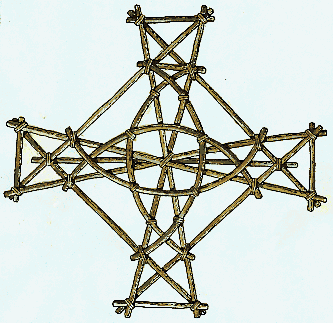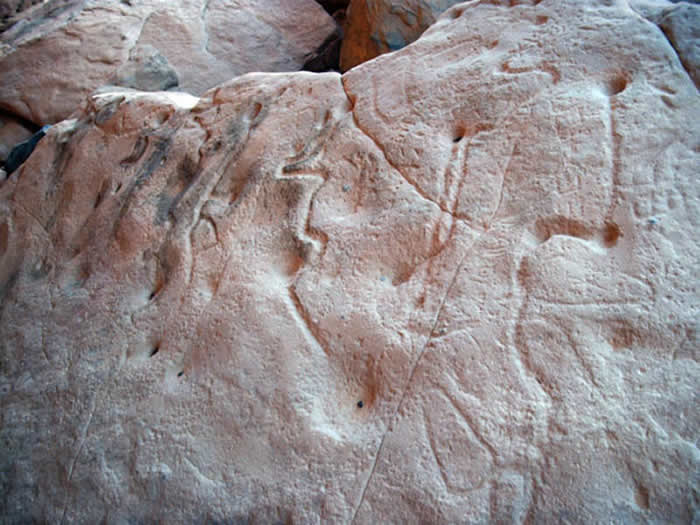(This is a summary of the Béthorm adventure I ran on July 24, 2014. It’s not my usual sort of adventure. This one was more something quick, to fill in a gap between two story arcs.)
Sútna hi Jamánu, a nobleman of the prestigious Rising Sun Disk Clan, requested the aid of a member of the Omnipotent Azure Legion (a contact). As he could not see how the matter related to ‘the Empire’, the officer refused, but he put Sútna in contact with the heroes.
The meeting was in a room rented from a low clan. Sútna, very heavily bandaged, with his arm in a sling and a splinted leg, explained that he and his companions (also of that Clan) had been exploring an underworld. There, they encountered a Sró-dragon. Only Sútna had lived to tell the tale but upon his return, his clan turned on him, blaming him for the deaths of his cousins.
Worst of all, the nobleman had left behind a steel sword, one enchanted to indicate the true heir of his lineage. He described it to the heroes, and told them that they could reach their destination by following small flags placed in the ground, each marked with a dot indicating the direction where the next might be found. He claimed the sword was on “the fourth level down”.
Sútna asked the heroes to recover this sword, then bear witness that there had indeed been a terrible Sró. Finally, he warned them that his rival, Rekávi, was also seeking that artifact. The heroes agreed to help.
—–
While preparing for subterranean exploration, the heroes noted a second group doing the same. They wore livery identifying them as members or hirelings of the Rising Sun Disk Clan.
The heroes managed to leave town earlier. They attempted to conceal their tracks, then turned the last marker in the wrong direction, removing all further flags as they found them.
The site turned out to be a coppice of nut trees on a small ridge between two farm fields. Here was an open hole where three could walk abreast. Newly crafted wooden stairs led down into darkness. The heroes saw blood droplets on the stairs. Arriving at the base of this, they were at the first floor down.
There were several rooms dug, and stocked with victuals in crates. Further on, an inch of water lined a passage but wooden planks had been lain across it. Sandal prints were visible, of about half a dozen entering. Only a single set of prints, however, were seen to leave, and, along with it, more blood droplets.
One of the heroes found a curious artifact trodden into the mud here. It was the scale of a creature, with one end of it pierced as if for use as an amulet. On one side of it, a glyph had been carved. Some sort of rustic talisman?
A second set of stairs led down further through dirt, to the second floor down. It was clear that this ‘expedition’ had involved quite a few employees, making the way down as convenient as possible! The consistent cross-section of the passage suggested something quite large had made a burrow.
The heroes found a third angled passage but here the stairs had been shattered, with claw marks here and there. It looked as if a Sró had done this.
Arriving at the third floor down, one of the heroes, an adopted Livyáni boy, scouted ahead. In a large chamber, he caught sight of the Sró, which was not hostile towards him. A foul odor– of intense human manure and fermented urine– was coming from a door on one side of the room.
In the center of the room personal effects were strewn about. The presence of sleeping mats, empty wine bottles, and a small fire indicated this had been a camping site. Also, the trail of blood splots appeared to begin here.
The dragon moved on, leaving the heroes to investigate three human-size doors recently installed into the chamber. Two rooms were filled with various choice supplies, but the middle door would not open.
Curious, the Sró peered in as the heroes were investigating. The heroes attempted to speak with it; apparently, it only knew a handful of words in Tsolyáni.
One of the heroes began trying to use hand gestures to communicate. The great Sró, middle-aged for its kind, was so amused that it rumbled, hawked up a basket-sized wad of phlegm onto the man, healing him of injury. (The creature therefore had at least some small magical talent…!)
There was some banging and yelling from the middle door, the people within asking to be let out. Puzzled, the heroes wondered why they had apparently barred themselves in to escape the dragon, yet could not unlatch the door to get back out. Closer investigation revealed the room’s door had a place where a peg had been pulled out– trapping them within.
The heroes managed to convey to the Sró that they wished the monster to open the middle door. It did so with several beak-strikes, incidentally letting out the odor of two weeks of excrement in a pile in one corner. The Sró looked very disgusted. The heroes set a slave of theirs to cleaning the room.
The men who came out turned out to be Rising Sun Clan Disk members– not armed warriors, but quill-pushing bureaucrats. They were adherents of Sútna who believed he was coming back to help them. One had noticed their leader cut himself as he fled, but had not given it further thought.
When the heroes told them Sútna had told them no such thing, it became apparent that the one who had led them there must have been Sútna’s brother Rekávi.
They regarded the peaceful Sró with fear. When one of the heroes attempted to convince them of the creature’s benevolence, it suddenly snarled and took a defensive pose.
From the far side of the room, a new party had appeared, of ten warriors protecting an eleventh man who looked like Sútna. Rekávi, obviously. He carried a metal sword that fit the description of the missing one.
The six who had been trapped in the room turned on Rekávi angrily. One cried, “We’ll kill you!” An older one put his hand on the first’s shoulder and said darkly, “No. We’ll see you in court.”
Attempting to impress his rescued Clan-mates, Rekávi brandished his sword, showing off how its gem flashed as if there was a light in it, as it made a strange shrill noise. “There’s no magic in that,” said the tattooed Livyáni boy (a young sorceror). Hearing this, Rekávi’s companions moved away from him.
Still, the heroes tried to play along, as if they still thought it was Sútna. When he ordered them to go into one of the pantry rooms, however, they balked. Rekávi called out to the Sró, “-Slay them!” He put his hand to his breast. His dragon-charm, however, was gone.
The angry “Dragon King” spread its wings, crossed the room, and closed its claws upon the man. It was so enraged, it dashed him by the legs against the wall, snapping his neck. Then it fled.


 In the South Seas, another tactile “map” device is the mattang. This is a “teaching” mattang. It doesn’t represent a particular island, it’s a diagram of what generically happens when wave fronts flow around an island. Mattangs are meant to be readable in the dark.
In the South Seas, another tactile “map” device is the mattang. This is a “teaching” mattang. It doesn’t represent a particular island, it’s a diagram of what generically happens when wave fronts flow around an island. Mattangs are meant to be readable in the dark.

